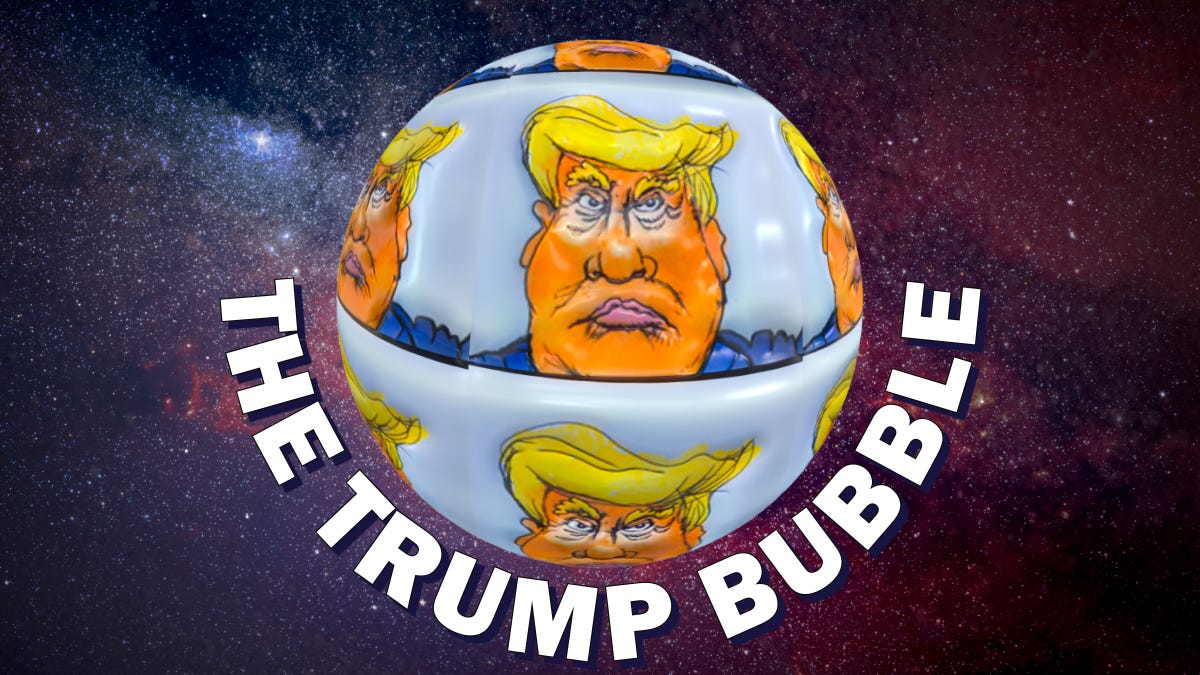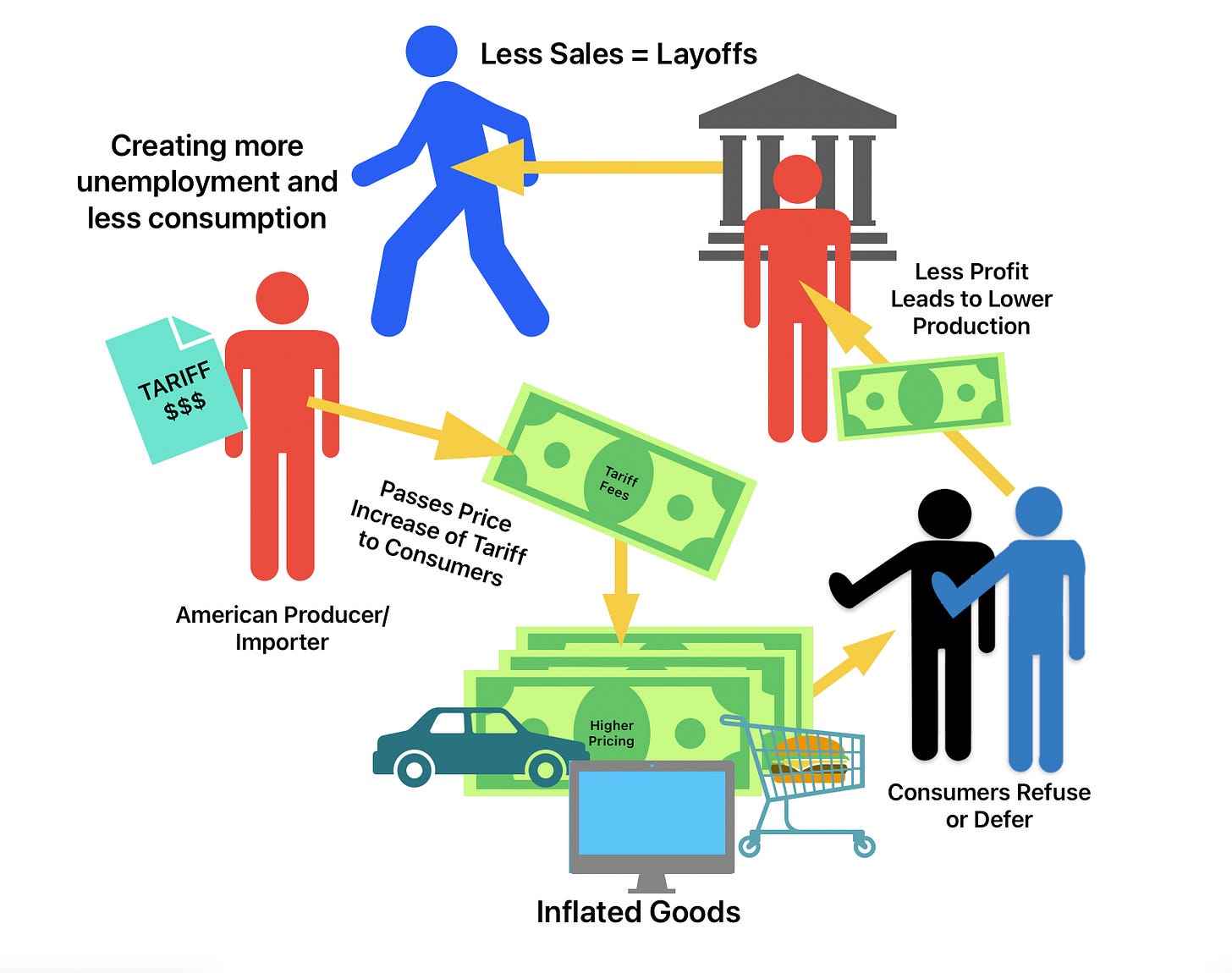There are two economic realms that are being impacted on by Trump’s economic theology. The “bubble” concerns finance and investment in huge speculative investments in AI technologies.
The other has to do with an impending stagflation largely driven by Trump’s Tariff policies. Both are arriving at a momen where the effects of stagflation, caused by Tariffs and a recession caused by huge speculative investment could double team the economy in ways that will result in deeply serious economic problems. These problems could easily take the remainder of Trumps current term to correct, and they can not be corrected with a giant Sharpie. That is to say, one can not BS out of it.
A Brief Examination of the Bubble Part
AI now almost triples the amount of money devoted annually to national defense. Something along the lines of 9% of our economy is now invested in AI and that is not limited to the development of Large Language Models or if you will the software of ChatBots. It is also embraces massive data centers and the server and processing hardware within them. The data center demands for electricity alone are now so great that they are taxing the power grid. The AI revolution also includes high speed state of the art chip production that goes inside the hardware that in turn goes inside the data centers. The lifespan of the chips and processing servers is rated at about two years.
Are there going to be winners? Absolutely, some will prove to yield high returns, but there are also a lot of AI ventures that reflect the heuristics that lead to a lot of bad decision making with investments. Many of these investments reflect little more than overconfidence and a lot of “herding.” Herding, as the word suggests, is where investors rush in to follow the mass of others riding the wave of seeming success. This is a hugely psychological phenomenon and not one predicated oh cold hard numbers.
As an example there are hedge funds and ETFs that do not directly own shares in AI companies or the venture capital firms that fuel them. Instead these investors are pouring money into the venture capital firms that in turn pour money into the various AI companies. These are investors on bets that other investors are making and they are spending easily tens of billions in just this one aspect of following a winner.
Uh, Oh
At this point in time, there are growing signs of concern that the promise of AI as a game changer is falling short of expectations. AI hype has promised serious productivity gains though this advanced technology, eliminating entry level jobs or at least lowering labor costs through greater productivity. AI is sold as productivity engine excelling at tasks that for humans is really just non creative slogging away.
However, there is growing evidence that goals once seen as a year away now appear to be at least three years out, or even farther. What?
An August 13th a New York Times column by Steve Lore reported that:
“According to recent research from McKinsey & Company, nearly eight in 10 companies have reported using generative A.I., but just as many have reported “no significant bottom-line impact.”
“Many companies envisioned getting rid of humans in ‘everything from back-office accounting to customer service.’ But, the payoff for businesses outside the tech sector is lagging behind, plagued by issues including an irritating tendency by chatbots to make stuff up.’”
The above reporting is just corporate speak for no real reduction in labor costs or increase in productivity.
Damn the Torpedos!
Now we are entering the phase of “sunk costs” a term used in both classic and behaviorist economics. This where we see investors doubling down, pouring more good money after verity potentially wasted money into into the insatiable maw of AI in order to force the hype to reality.
It is not surprising that investments in generative A.I. by businesses are expected to increase 94 percent this year to $61.9 billion, according to IDC, a technology research firm.
Yet the percentage of companies abandoning most of their A.I. pilot projects soared to 42 percent by the end of 2024, up from 17 percent the previous year, according to a survey of more than 1,000 technology and business managers by S&P Global, a data and analytics firm.
Projects failed not only because of technical hurdles, but often because of “human factors” like employee and customer resistance or lack of skills
Will this bubble burst, when will it burst, and how bad will it impact the economy. It’s just too early, but we should see much clearer indicators by 2026-27
Trump Induced Stagflation
The essence of the Trump pitch to grow the American Economy:
Tariffs will result in revenues that can support positive government programs.
Tariffs foster the growth of domestic manufacturing by forcing the purchase of American made goods.
Stifles economic leverage by foreign governments.
When it comes to Economics Trump’s Tariff policy demonstrates the utter failure of classical free market theology to understand that human behavior plays a huge role in what will be the coming stagflation. It’s really not just a matter of what amounts to an accounting slight of hand that has causel effects.
In the model I created below there are three key points that can readily be viewed in the context of Behavioral Economics. You will see that the various parties have decisions to make based on essentially an economic pain tolerance:
The Buyer must decide to suffer the tariff or pass it to the consumer.
The Consumer must decide to suffer the higher cost, defer it or refuse it.
Buyers and Producers, must lower costs (due to increased Tariffs) or reduce labor costs, increasing unemployment.
This does not function as a perfect cycle. Yet in the end it is all about transferring or avoiding costs, where there are few options to escape. This scenario leading to economic hardship in stagflation, has a real probability of happening in the first quarter of 2026.
The “fake” numbers from the BLS that so enraged Trump are in fact real indicators of the parties to transactions deciding how to confront the pain and realities of economic loss. Costs are rising, consumers are balking, and producers are reducing cost through labor reduction. This has little to do with belief in the power of Tariffs as envisioned by Trump and a lot to do with economy that has little wiggle room in avoiding the downside of increased costs
Trump’s tariffs create the classic vicious cycle that is at the root of the coming stagflation. Increasing inflation costs, increasing unemployment, sluggish consumer demand, less business productivity. The process essentially is stuck in this quagmire.



